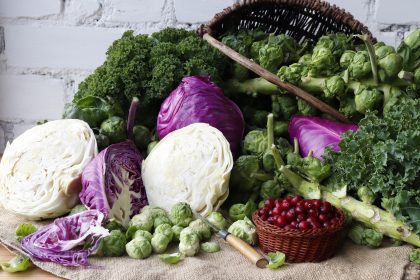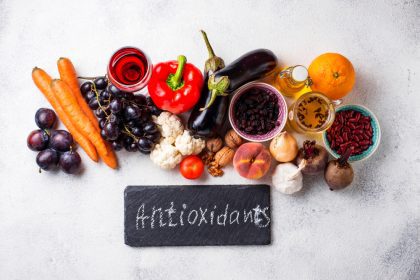Most people associate lung cancer primarily with smoking, but growing evidence suggests diet plays a more significant role than previously thought. While numerous foods help protect against cancer, others might unexpectedly increase risk. One common dietary staple has emerged as a potential contributor to lung cancer development through multiple biological mechanisms.
Beyond smoking: The evolving understanding of lung cancer risk
Lung cancer remains one of the deadliest forms of cancer worldwide, claiming more lives annually than breast, prostate, and colorectal cancers combined. While tobacco smoke continues to represent the primary risk factor, accounting for approximately 80-90% of cases, a significant number of lung cancers develop in people who have never smoked.
Environmental factors like radon exposure, air pollution, secondhand smoke, and occupational hazards explain some non-smoking cases. Genetics also plays a role, with certain inherited mutations increasing susceptibility. However, mounting evidence suggests dietary patterns significantly influence lung cancer development, either increasing or decreasing risk.
The relationship between diet and cancer has grown increasingly nuanced in recent research. Rather than focusing solely on individual nutrients, scientists now examine how entire dietary patterns and specific food processing methods affect cancer risk. This broader approach has revealed unexpected connections between common foods and lung cancer development.
Processed meat emerges as an unexpected lung cancer risk factor
Among various dietary components studied, processed meat has emerged as a particularly concerning potential contributor to lung cancer risk. This category includes bacon, sausage, hot dogs, ham, jerky, salami, pepperoni, and other preserved meat products that undergo smoking, curing, salting, or chemical preservation.
Multiple large-scale population studies have identified associations between regular processed meat consumption and increased lung cancer incidence. This relationship persists even after accounting for smoking status, though the risk appears particularly pronounced in smokers – suggesting processed meat might amplify tobacco-related damage.
The risk appears dose-dependent, with higher consumption levels corresponding to greater risk. Consuming just 50 grams of processed meat daily (approximately two slices of bacon or one hot dog) associates with a measurable increase in lung cancer risk compared to minimal consumption.
Importantly, this association appears stronger for processed meats than for fresh red meat, implicating the preservation methods rather than the meat itself as the primary concern. Different types of processed meats may carry varying levels of risk depending on their specific processing methods and chemical profiles.
Nitrates and nitrites: Controversial preservatives under scrutiny
Sodium nitrite and sodium nitrate serve as key preservatives in most processed meats, preventing bacterial growth (particularly Clostridium botulinum), maintaining color, and developing characteristic flavors. These compounds, while effective for food safety, undergo problematic transformations within the body.
In the acidic environment of the stomach and under certain cooking conditions, nitrites convert into nitrosamines – potent carcinogenic compounds. Nitrosamines damage DNA directly, potentially initiating the cellular mutations that lead to cancer development. These compounds can reach the lungs through the bloodstream after digestion.
The formation of nitrosamines accelerates at high temperatures, making cooking methods particularly important. Frying bacon until crisp, for example, generates significantly more nitrosamines than gentler cooking methods. Similarly, charring processed meats on a grill maximizes the formation of these harmful compounds.
Modern processed meat production often includes ascorbic acid (vitamin C) to inhibit nitrosamine formation. However, this protective effect remains incomplete, and significant nitrosamine exposure still occurs with regular processed meat consumption.
Advanced glycation end products: The hidden hazard in crispy meats
Beyond nitrosamines, processed meats contain exceptionally high levels of advanced glycation end products (AGEs) – harmful compounds formed when proteins or fats combine with sugars. These compounds form naturally during high-temperature cooking, particularly in methods that brown or crisp the food surface.
Processed meats prove especially problematic regarding AGEs due to their composition (high protein and fat content) and typical preparation methods (frying, grilling, or broiling). A single serving of crispy bacon contains more AGEs than many entire meals combined.
Once consumed, AGEs promote oxidative stress and inflammation throughout the body, including in lung tissue. Chronic inflammation creates an environment conducive to cancer development by damaging cellular DNA and disrupting normal cellular growth regulation mechanisms.
Additionally, AGEs interact with specific receptors in lung tissue (RAGE receptors), triggering inflammatory cascades that may promote tumor development and progression. This direct effect on lung tissue might partly explain the specific association between processed meat and lung cancer rather than just a general cancer risk.
Heme iron: The double-edged sword in red meat products
Processed red meat products contain abundant heme iron – the type of iron found in blood and muscle tissue. While iron remains essential for human health, heme iron specifically may contribute to cancer development through several mechanisms.
Heme iron catalyzes oxidative reactions in the digestive tract, generating free radicals that damage the intestinal lining. This damage may increase the absorption of other carcinogenic compounds from processed meat into the bloodstream, eventually reaching lung tissue.
Additionally, excess heme iron accumulation in tissues promotes oxidative stress directly within cells. The lungs, continuously exposed to oxygen, remain particularly vulnerable to oxidative damage. This oxidative environment can damage DNA and alter cellular function in ways that promote cancer development.
The combination of heme iron with nitrites in processed meats creates particularly favorable conditions for nitrosamine formation. This synergistic effect may explain why processed red meats appear more strongly associated with cancer risk than either fresh red meat or processed white meats like turkey.
The inflammatory impact of processed meat consumption
Chronic inflammation represents a well-established cancer risk factor, creating tissue environments that promote tumor development and progression. Processed meats contribute to systemic inflammation through multiple components and mechanisms.
The high saturated fat content in many processed meat products promotes inflammatory responses throughout the body. While acute inflammation serves as a normal protective mechanism, chronic low-grade inflammation damages tissues over time and creates conditions favorable for cancer development.
Processed meats typically contain high sodium levels, with a single serving providing a substantial portion of the recommended daily sodium limit. Excessive sodium intake associates with increased inflammatory markers and oxidative stress that may contribute to lung tissue damage over time.
Chemical preservatives, artificial flavorings, and other additives in processed meats may trigger inflammatory responses in sensitive individuals. While these reactions vary among people, they can contribute to chronic inflammation in regular consumers.
The cooking methods typically used for processed meats generate heterocyclic amines (HCAs) and polycyclic aromatic hydrocarbons (PAHs) – compounds that promote inflammation and have demonstrated carcinogenic properties in laboratory studies.
Making informed dietary choices for lung health
Understanding the potential risks associated with processed meat consumption enables informed dietary decisions that may reduce lung cancer risk, particularly important for those with additional risk factors.
Consider plant-based protein alternatives like legumes, tofu, tempeh, and seitan, which provide comparable protein content without the potentially harmful compounds found in processed meats. These foods often contain protective compounds that may actively reduce cancer risk.
If consuming meat, prioritize fresh, unprocessed options prepared using gentle cooking methods like poaching, steaming, or slow cooking at lower temperatures. These approaches minimize the formation of HCAs, PAHs, and AGEs during preparation.
For occasional processed meat consumption, select products labeled “nitrate-free” or “nitrite-free,” though be aware that many such products use natural nitrate sources like celery powder that convert to nitrites during processing. While potentially somewhat less concerning, these products still warrant moderation.
Balance any meat consumption with abundant fruits and vegetables rich in antioxidants and anti-inflammatory compounds. These foods help counteract oxidative stress and inflammation, potentially mitigating some processed meat-related damage.
The broader dietary pattern matters most
While processed meat has emerged as a potential lung cancer risk factor, focusing exclusively on eliminating single foods oversimplifies the complex relationship between diet and cancer risk. The overall dietary pattern plays a far more significant role in determining cancer risk than any individual food.
Mediterranean and plant-forward dietary patterns consistently associate with reduced cancer risk across multiple studies. These approaches emphasize fruits, vegetables, whole grains, legumes, nuts, seeds, olive oil, and moderate fish consumption while limiting processed foods, refined carbohydrates, and red meat.
The MIND diet (Mediterranean-DASH Intervention for Neurodegenerative Delay), initially developed for brain health, contains many elements that may protect against cancer development. This approach specifically emphasizes leafy greens, berries, nuts, olive oil, and whole grains while minimizing processed foods and meats.
Anti-inflammatory dietary patterns focus on foods that reduce systemic inflammation, including fatty fish, colorful fruits and vegetables, nuts, seeds, herbs, and spices. Since chronic inflammation contributes to cancer development, this approach may provide protective benefits against lung cancer.
Balancing risks in context of overall health
When considering dietary changes to reduce lung cancer risk, maintaining perspective on relative risk factors remains essential. For smokers, tobacco cessation represents by far the most effective strategy for reducing lung cancer risk, with dietary factors playing a secondary though still significant role.
The risk associated with moderate processed meat consumption falls considerably below that of smoking, radon exposure, or significant air pollution. However, unlike some environmental factors, dietary choices remain largely within individual control, making them an accessible avenue for risk reduction.
For highest-risk individuals, particularly current or former smokers, combining multiple risk-reduction strategies provides the greatest benefit. This comprehensive approach includes smoking cessation, environmental risk minimization, regular screening when appropriate, and dietary optimization, including processed meat limitation.
Genetic factors influence how individuals respond to dietary components, explaining why some people appear more vulnerable to diet-related cancer risk than others. Future personalized nutrition approaches may provide more tailored recommendations based on individual genetic profiles.
While the evidence connecting processed meat consumption to increased lung cancer risk continues to strengthen, definitive causal relationships remain under investigation. Current recommendations emphasize moderation rather than complete elimination for most individuals, with greater restriction suggested for those with additional lung cancer risk factors.
By understanding these emerging dietary risk factors and making informed choices, you can take proactive steps toward reducing your lung cancer risk through simple, everyday food decisions.

















